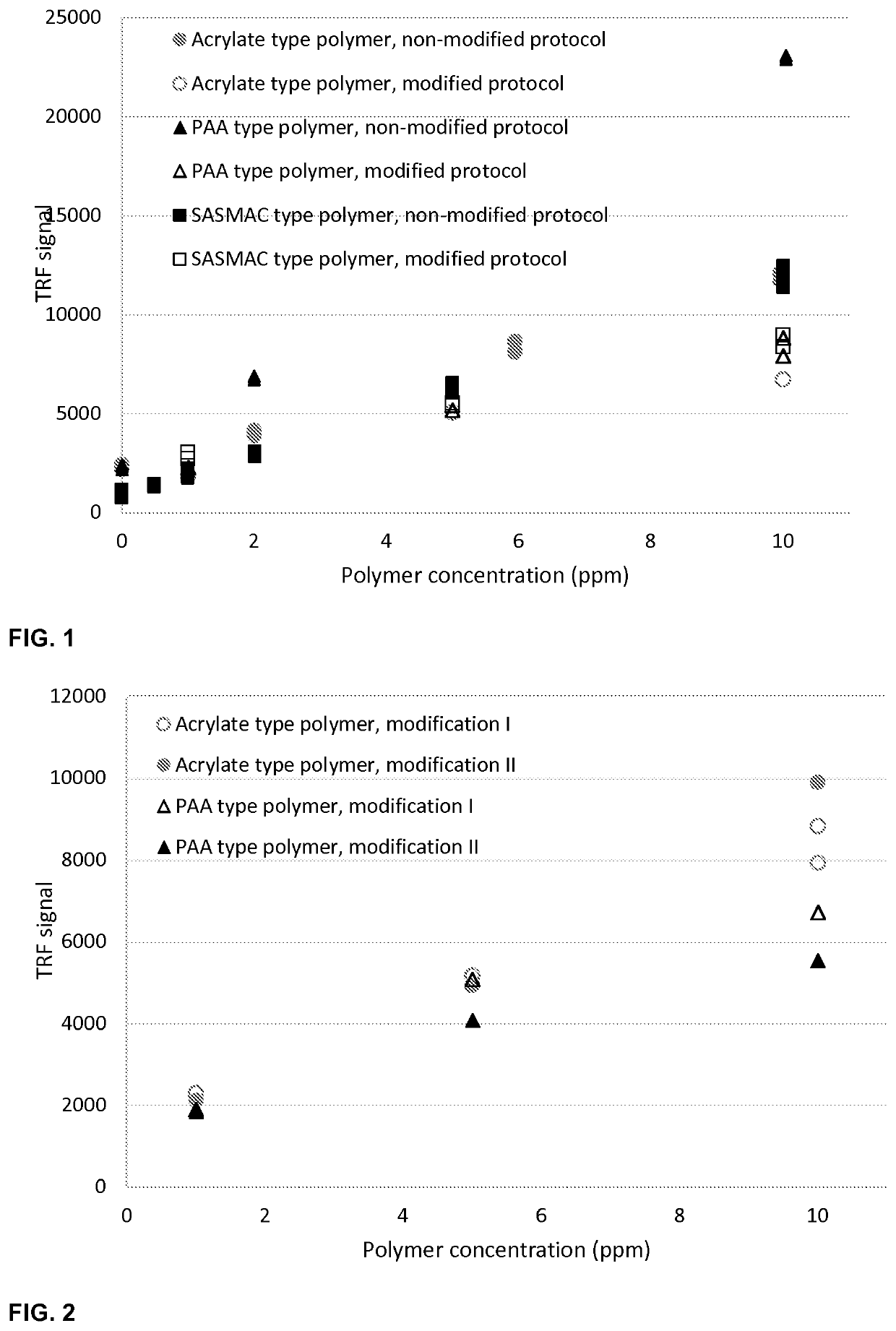Method for measuring concentration of polyelectrolyte and phosphonate blends
a technology which is applied in the field of determining the concentration of polyelectrolyte and phosphonate blends, can solve the problems of difficult or even impossible quantification, and achieve the effect of reducing the difficulty of quantification
- Summary
- Abstract
- Description
- Claims
- Application Information
AI Technical Summary
Benefits of technology
Problems solved by technology
Method used
Image
Examples
example 1
zation (Modification) of the TRF Signal of Polyacrylic Acids, Polyacrylates, SASMAC and AA-AMPS Copolymers or a Polymer Blend Thereof (According to the Invention)
[0057]The polymer or polymer blend is optionally diluted to suitable concentration range. Preferably, the active concentration of the sample and europium lanthanide are 0.5-50 ppm and μM, respectively. Optionally the polymer is diluted to suitable aqueous solution e.g. deionized water or brine containing monovalent and / or divalent ions. Preferably, the dissolution brine does not contain any trivalent ions. If the polymer solution contains some interfering compounds, suitable pretreatment procedures may be applied prior to the dilution steps. In the example, the polymers were diluted into a brine, which TDS varied between 20 000 and 40 000 ppm. The brines contain alkaline and earth alkaline metals as chlorides or bicarbonates.
[0058]After the optional dilution of the polymer, the solution is acidified to suitable pH range. Pr...
example 2
xture of Polyacrylic Acid and Fluorescence Tagged SASMAC (According to the Invention)
[0061]The binary mixture composition of polyacrylic acid and fluorescence tagged SASMAC can be examined by first using the modification method presented in Example 1. In the modification, the high signal of polyacrylic acid is reduced into the same level as that of SASMAC.
[0062]After total measurement, tagged SASMAC polymer can be measured with fluorescence method specific for the tag. For instance, sodium styrene sulfonate (NaSS) tagged SASMAC polymer can be quantified by fluorescence measurement of the product. Tag specific excitation and emission wavelengths are used in the measurement. In the case of NaSS tag, excitation and emission wavelengths of 225 nm and 285 nm can be used. The calibration standards of NaSS tagged SASMAC are measured similarly as the product and the fluorescence signal are converted into concentration of the polymer.
[0063]Polyacrylic acid concentration is obtained by subtra...
PUM
| Property | Measurement | Unit |
|---|---|---|
| delay time | aaaaa | aaaaa |
| emission wavelength | aaaaa | aaaaa |
| emission wavelength | aaaaa | aaaaa |
Abstract
Description
Claims
Application Information
 Login to View More
Login to View More - R&D
- Intellectual Property
- Life Sciences
- Materials
- Tech Scout
- Unparalleled Data Quality
- Higher Quality Content
- 60% Fewer Hallucinations
Browse by: Latest US Patents, China's latest patents, Technical Efficacy Thesaurus, Application Domain, Technology Topic, Popular Technical Reports.
© 2025 PatSnap. All rights reserved.Legal|Privacy policy|Modern Slavery Act Transparency Statement|Sitemap|About US| Contact US: help@patsnap.com

